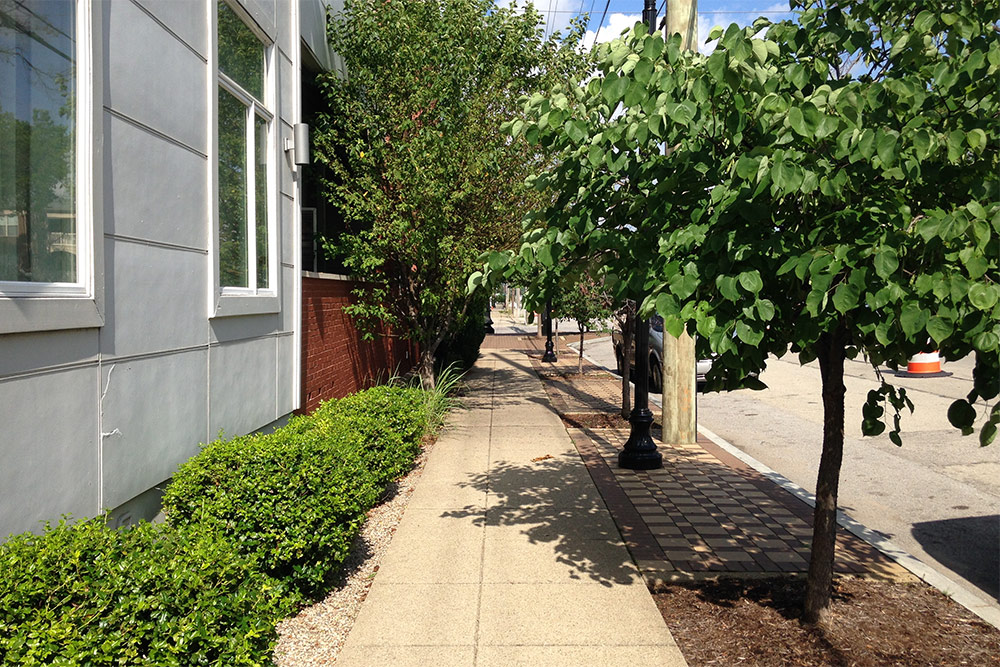Congratulations to Brandon Schadt for being first to correctly identify our last sidewalk photo as Jefferson Street looking west at Preston Street underneath the behemoth elevated Interstate 65.
Here’s a new sidewalk challenge for this week ready to be identified in the comments below for your chance to win an official Broken Sidewalk magnet. (The rules: First correct response wins; Leave a real email so we can get in touch if you win; No repeat winners for four months; Comments must be left on this news roundup.) Good luck!
And now on with the week’s top urbanism #cityreads in the news:
Reviving the Dead Spaces Under Elevated Structures. What kinds of possibilities do the hidden underbellies of NYC’s raised subway platforms offer for a city starved for space? City Lab
E before I: Why engagement needs to come first in planning infrastructure. “Engagement is emphatically not a fringe issue.” London’s deputy Mayor for Transportation, Isabel Dedring, tells you why. McKinsey & Company
Seattle’s Tent Cities. “Seattle has America’s fourth-largest homeless population and virtually everything homeless people do is illegal in Washington State, which has added 288 new offenses related to homelessness to its statute-books since 2000 — amazingly, this did not convince those homeless people to stop being homeless.” boingboing
California’s Homeless Find Peace in Libraries. “In a world dominated by the internet and social media, being homeless often means being detached from anything that’s not happening in the immediate vicinity. For many of the homeless people living in California, public libraries serve as a type of sanctuary where many go to learn, imagine and connect with the world.” Cool Hunting
Map: The biggest company in every state. Your weekly map fix! Enjoy. Washington Post: Wonkblog
Does Cleveland Know the Secret to Building Wealth Without Gentrification?. I’d argue that they’ve begun to puzzle out the formula for something even more interesting than the faux concept of wealth, but I digress. See how cooperative ownership can be a catalyst for revitalizing cities without displacement. Next City
Uncovering the Early History of “Big Data” and the “Smart City” in Los Angeles. It seems that Los Angeles has been a ‘smart city’ since the early 1950s. BOOM a Journal of California
Owen Hatherley on the mass housing history of Moscow’s suburbs. Sprawl isn’t a U.S. specific issue anymore. Archinect
Coyotes Create Dangers and Divisions in New York Suburbs. Sorry, we just can’t get enough of this urban ecology. The New York Times
Crime predicting algorithms: A selective determinism. A fascinating piece by The Funambulist about predicting crime, and the inherent problems with speculative policing in cities. The Funambulist



Right in front of Gallery Square looking east on Jefferson St.